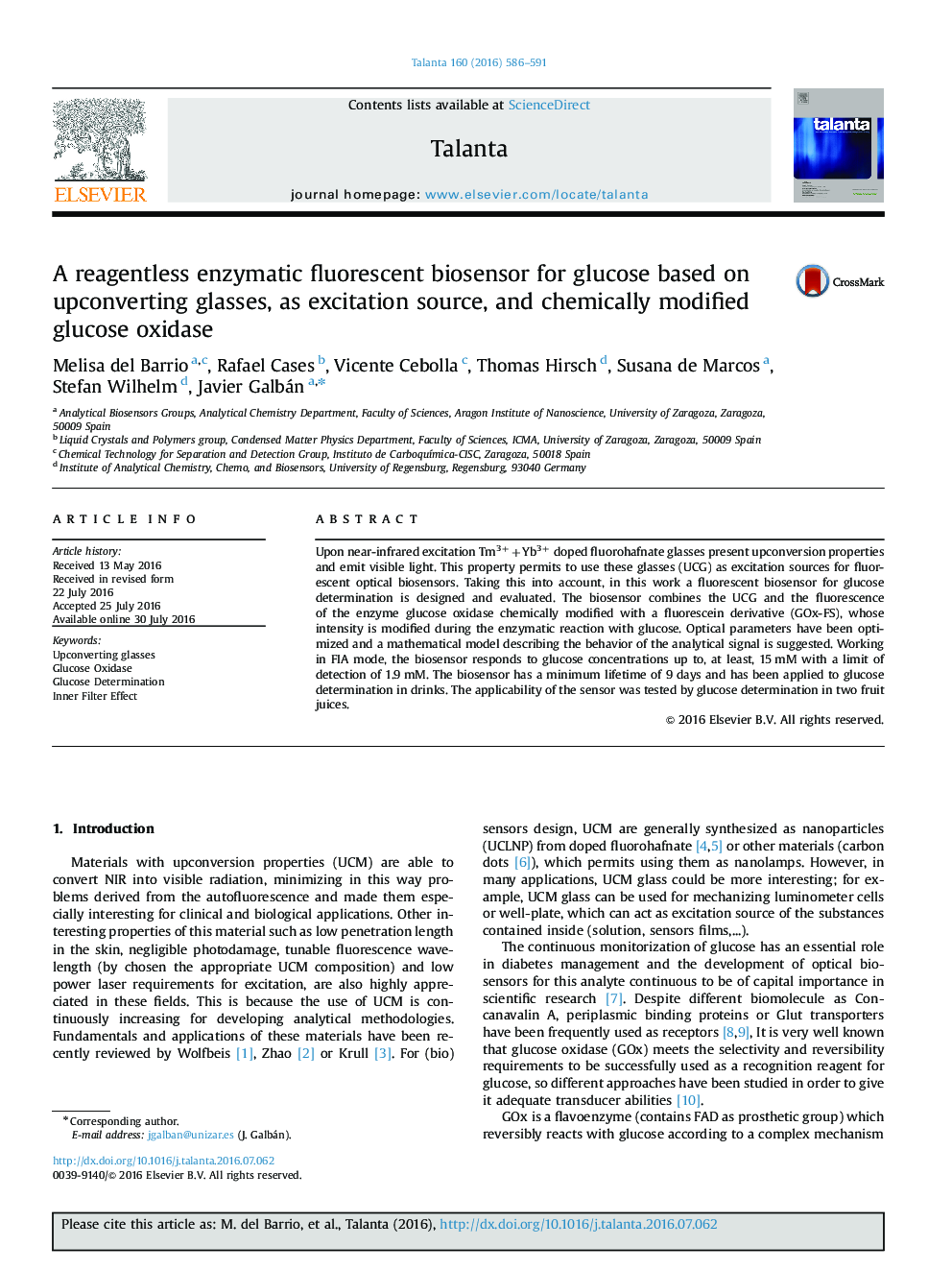| Article ID | Journal | Published Year | Pages | File Type |
|---|---|---|---|---|
| 1243298 | Talanta | 2016 | 6 Pages |
•Upconverting crystals are used as a basis of a biosensor.•A mathematical model describing the biosensor is deduced.•The fluorescence of the glucose oxidase is used as the analytical signal.•The biosensor is reversible.
Upon near-infrared excitation Tm3++Yb3+ doped fluorohafnate glasses present upconversion properties and emit visible light. This property permits to use these glasses (UCG) as excitation sources for fluorescent optical biosensors. Taking this into account, in this work a fluorescent biosensor for glucose determination is designed and evaluated. The biosensor combines the UCG and the fluorescence of the enzyme glucose oxidase chemically modified with a fluorescein derivative (GOx-FS), whose intensity is modified during the enzymatic reaction with glucose. Optical parameters have been optimized and a mathematical model describing the behavior of the analytical signal is suggested. Working in FIA mode, the biosensor responds to glucose concentrations up to, at least, 15 mM with a limit of detection of 1.9 mM. The biosensor has a minimum lifetime of 9 days and has been applied to glucose determination in drinks. The applicability of the sensor was tested by glucose determination in two fruit juices.
Graphical abstractFigure optionsDownload full-size imageDownload as PowerPoint slide
